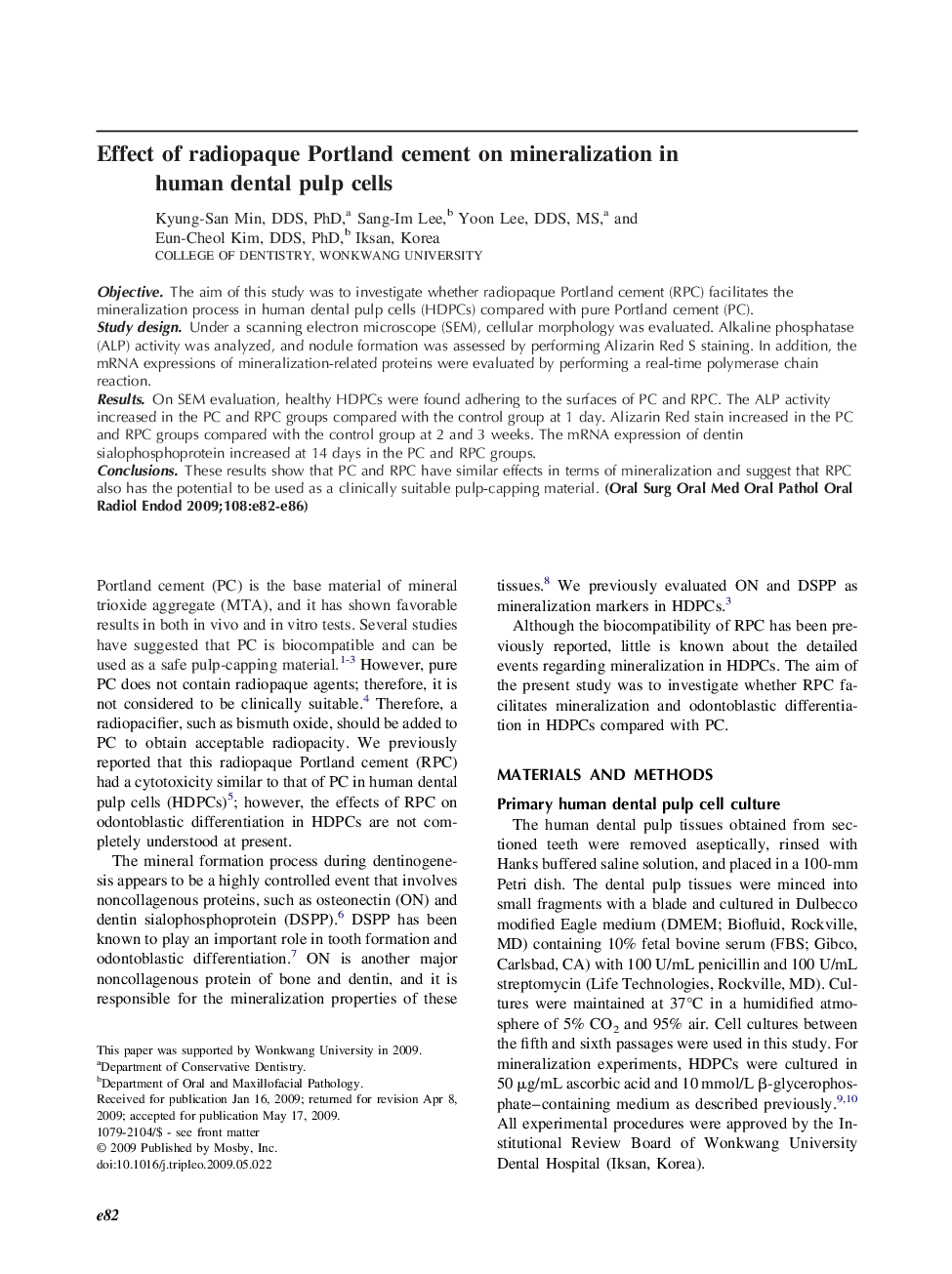| Article ID | Journal | Published Year | Pages | File Type |
|---|---|---|---|---|
| 3167946 | Oral Surgery, Oral Medicine, Oral Pathology, Oral Radiology, and Endodontology | 2009 | 5 Pages |
ObjectiveThe aim of this study was to investigate whether radiopaque Portland cement (RPC) facilitates the mineralization process in human dental pulp cells (HDPCs) compared with pure Portland cement (PC).Study designUnder a scanning electron microscope (SEM), cellular morphology was evaluated. Alkaline phosphatase (ALP) activity was analyzed, and nodule formation was assessed by performing Alizarin Red S staining. In addition, the mRNA expressions of mineralization-related proteins were evaluated by performing a real-time polymerase chain reaction.ResultsOn SEM evaluation, healthy HDPCs were found adhering to the surfaces of PC and RPC. The ALP activity increased in the PC and RPC groups compared with the control group at 1 day. Alizarin Red stain increased in the PC and RPC groups compared with the control group at 2 and 3 weeks. The mRNA expression of dentin sialophosphoprotein increased at 14 days in the PC and RPC groups.ConclusionsThese results show that PC and RPC have similar effects in terms of mineralization and suggest that RPC also has the potential to be used as a clinically suitable pulp-capping material.
